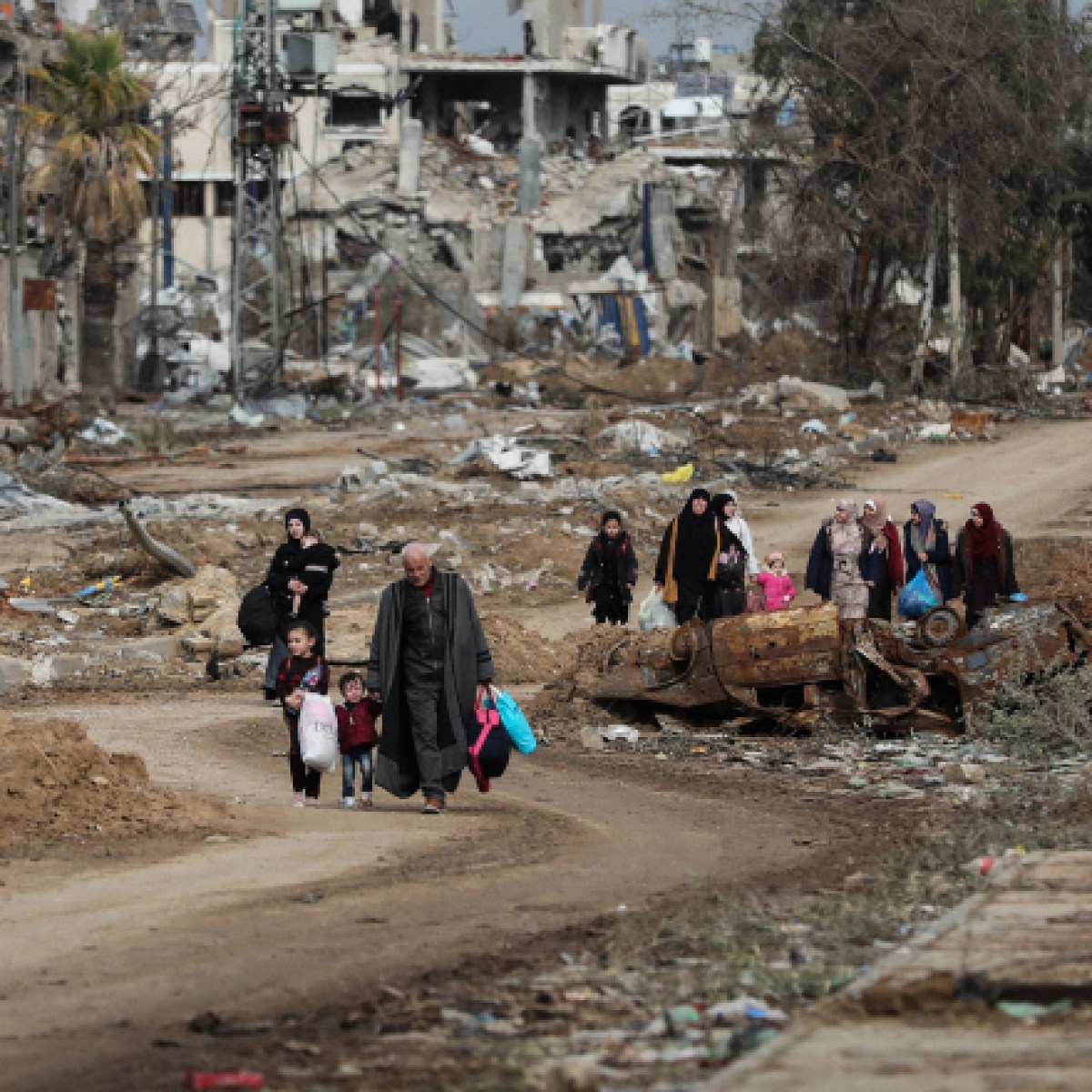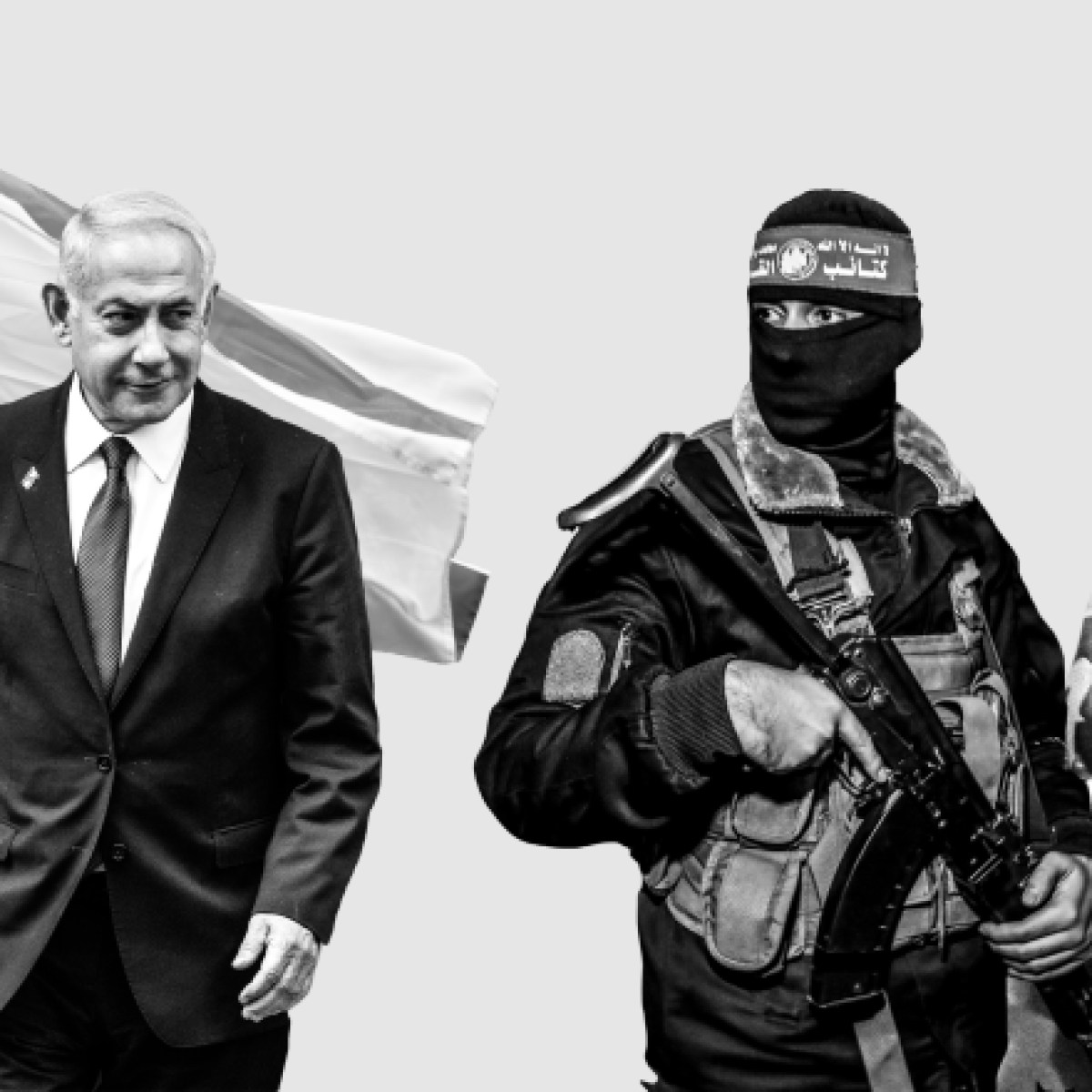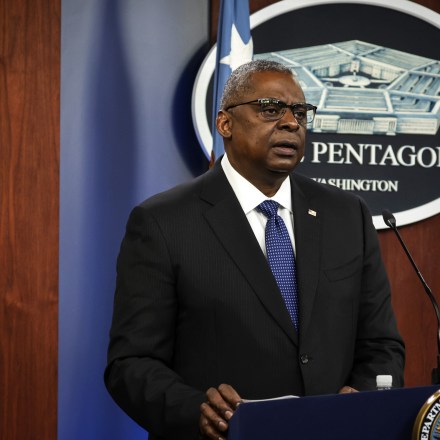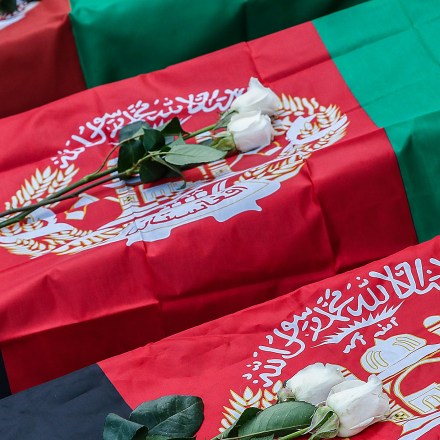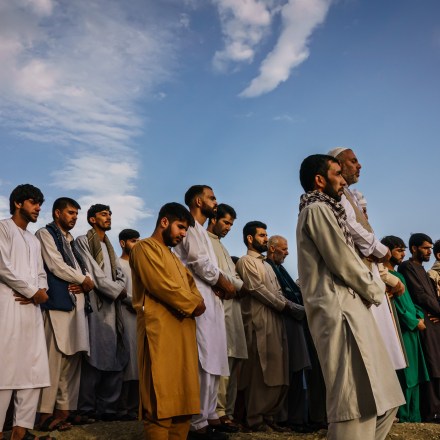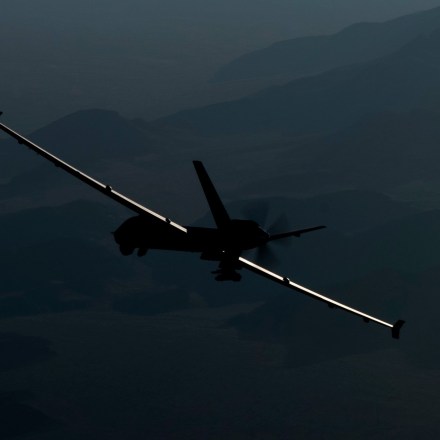This story was supported by the Pulitzer Center.
Mogadishu, SOMALIA — Mariam Shilow Muse was born in the springtime. When relatives dropped by, the bright-eyed 4-year-old bolted through the yard and beyond the fence to greet them. When her father came home, she smothered him with hugs.
In late March 2018, Mariam’s mother, 22-year-old Luul Dahir Mohamed, planned to visit her brother to see his children for the first time, and Mariam insisted on coming along to meet her young cousins. Luul’s brother had planned to pick them up, but Luul couldn’t reach him by phone, so on the morning of April 1, she and Mariam caught a ride with some men in a maroon Toyota Hilux pickup.
That same afternoon, as Luul’s brother Qasim Dahir Mohamed was on his way to pick up his sister and niece, he passed the maroon Toyota pickup. He noticed mattresses and pillows in the bed and, at the last second, caught sight of Luul, with Mariam on her lap, in the passenger seat. He waved and honked, but the truck kept going.
Qasim’s phone wasn’t working, so he decided to drive on to El Buur, where Luul and Mariam had just spent the night, to see other relatives before returning home to welcome his sister and niece. Seconds after he reached the house, Qasim heard the first explosion, followed by another and, after a pause, one more blast.
-
The Intercept is publishing, for the first time, a Pentagon investigation of civilian deaths from a drone strike in Africa.
-
The probe acknowledged that a woman and child were killed in a 2018 attack in Somalia but found that standard operating procedures were followed.
-
After months of “target development,” a secret U.S. task force rushed to annihilate perceived enemies in a war Congress didn’t declare, mistaking a woman and child for an adult male. They never even knew how many people they killed.
-
The strike was conducted under loosened rules of engagement approved by the Trump White House, and no one was ever held accountable for the civilian deaths.
-
The Pentagon expressed doubt that the victims’ identities would ever be known. But in Mogadishu this spring, seven members of their family told The Intercept that, despite multiple pleas, they have never received compensation or an apology from the U.S.
This is a story about missed connections, flawed intelligence, and fatal blindness, about Americans misreading what they saw and obliterating civilians they didn’t intend to kill but didn’t care enough to save. In rural Somalia, cellphones often fail because the militant group al-Shabab forces the local carrier to suspend service to thwart informants and government eavesdropping. But after the explosions, the telecom immediately restored service. Qasim began calling Luul, but her phone rang endlessly.
The news spread fast: A drone strike had hit a pickup carrying mattresses. Qasim and one of his brothers started driving toward the site of the attack. They were the only ones on the road and his brother demanded they stop, Qasim told me when we met recently in Somalia’s capital, Mogadishu. It was too dangerous, the brother said. What if they were targeted by another strike? “I told him that I didn’t care,” Qasim recalled.
Qasim wasn’t the only person to spot the Toyota pickup that day. In a military joint operations center that the U.S. government refuses to identify, members of a Special Operations task force that officials won’t name watched live footage that they declined to release of everyone who entered the Hilux. They recorded and scrutinized it, chronicling when each “ADM” — or adult male — got in or out, where they walked and what they did. The Americans logged these minute details with a pretense of precision, but they never understood what they were seeing.
For all their technology and supposed expertise, the Americans were confused, and some were inexperienced, according to a Pentagon investigation obtained by The Intercept via the Freedom of Information Act. The inquiry is the first such document to be made public about a U.S. drone strike in Africa. It reveals that after months of “target development,” the Americans suddenly found themselves in a mad rush to kill people who posed no threat to the United States in a war that Congress never declared. They argued among themselves about even the most basic details, like how many passengers were in the vehicle. And in the end, they got it wrong. The Americans couldn’t tell a man from a woman, which might have affected their decision to conduct the strike. They also missed the 4-year-old child whose presence should have caused them to stand down.
In the joint operations center, the Americans quickly realized their initial strike had failed to kill all the passengers and decided to eliminate what the investigation file refers to as a sole “survivor running away from vehicle post the first engagement.” But the “survivor” was actually two people: Luul and Mariam. Seconds later, another missile screamed down from the sky.
“It seemed like they did everything wrong,” said an American drone pilot who worked in Somalia and examined the investigation file at The Intercept’s request.
When Qasim found the Toyota, the roof was torn open, the bed was smashed, and the mattresses and pillows were aflame. Four men were dead inside and another young man lay lifeless in the dirt nearby. There was no sign of Luul or Mariam.
About 200 feet away, Qasim found what remained of Luul. Her left leg was mangled, and the top of her head was missing. She died clutching Mariam, whose body was peppered with tiny shards of shrapnel.
Qasim tore off a swath of his sarong and began gathering up small pieces of his sister. Stunned and grieving, he spent hours searching for fragments of her body along the dirt road, working by the glare of his car’s headlights as the sky darkened. Finally, he bundled Luul’s and Mariam’s remains and brought them home. Luul’s body was so mutilated that it was impossible to properly wash, as is required in Islam. Instead, he wrapped her with care in a shroud and buried Luul and Mariam together in a village cemetery. The next day, locals living near the strike site called Qasim. They had found the top of Luul’s skull, complete with hair and a delicate gold teardrop dangling from one ear.
That same day — April 2 — U.S. Africa Command, or AFRICOM, announced it had killed “five terrorists” and destroyed one vehicle and that “no civilians were killed in this airstrike.” The Somali press immediately said otherwise. By the following month, the task force had appointed an investigating officer to sort it all out. He quickly determined that his unit had killed an “adult female and child” but expressed doubt that their identities would ever be known.
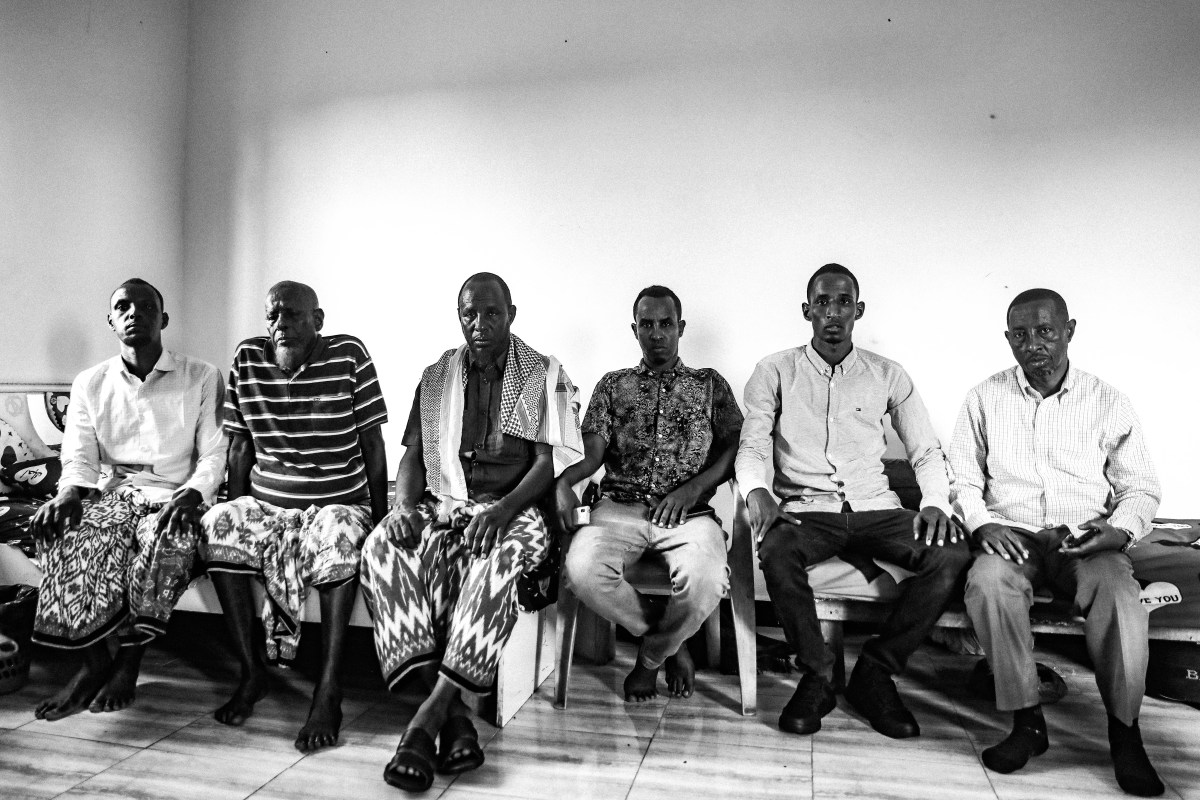
“We Can Do Whatever We Want”
The exclusive documents and interviews with more than 45 current and former U.S. and Somali military personnel and government officials, victims’ relatives, and experts offer an unprecedented window into the U.S. drone war in Somalia, an investigator’s efforts to excuse the killing of a woman and child, and a “reporting error” that kept those deaths secret for more than a year from Congress, the press, and the American people. The Intercept’s investigation reveals that the strike was conducted under loosened rules of engagement sought by the Pentagon and approved by the Trump White House, and that no one was ever held accountable for the civilian deaths.
“Ultimately, this is just one of many tragedies caused by the U.S. military’s systemic failure to adequately distinguish civilians from combatants, to own up to its deadly mistakes, to learn from them, and to provide assistance to survivors,” Daphne Eviatar, director of the Security With Human Rights program at Amnesty International USA, told The Intercept. “The failure to adequately distinguish civilians from combatants isn’t just tragic. It’s also a violation of international law and completely undermines U.S. counterterrorism strategy.”
More than five years after the strike, Mariam and Luul’s family has not been contacted by any U.S. official or received a condolence payment. Over two days this spring, I met with eight of their relatives in Mogadishu. They spoke about Mariam’s wide smile, Luul’s nurturing role as a sister and mother of two, and the terror that haunts Luul’s surviving son. Their anguish and outrage were palpable, particularly when I showed them the findings of the formerly secret U.S. investigation.
If the Somali military had killed Americans in similar circumstances, Abdi Dahir Mohammed, another of Luul’s brothers, told The Intercept, “the United States would have reacted and the Somali government would have reacted. The pain that Americans would feel is the pain that we feel. They know innocent people were killed, but they’ve never told us a reason or apologized. No one has been held accountable. We’ve been hurt — and humiliated.”
The attack was the product of faulty intelligence as well as rushed and imprecise targeting by a Special Operations strike cell whose members considered themselves inexperienced, according to the documents. The secret investigation led to an admission that civilians were killed and a strong suggestion of confirmation bias, a psychological phenomenon that leads people to cherry-pick information that confirms their preexisting beliefs. Despite this, the investigation exonerated the team involved.
“The strike complied with the applicable rules of engagement,” wrote the investigator. “[N]othing in the strike procedures caused this inaccurate [redacted] call.” Luul’s husband and Mariam’s father, Shilow Muse Ali, seemed staggered as he tried to process those words. “The attack was horrible and their response was horrible. I lost a wife and a child,” he told The Intercept. “But I cannot understand the explanation in the investigation. How can you admit that you killed two civilians and also say the rules were followed?”
“How can you admit that you killed two civilians and also say the rules were followed?”
AFRICOM declined to answer The Intercept’s questions about the attack or civilian casualties in general. When the command finally admitted the killings in 2019, AFRICOM’s then-commander, Gen. Thomas Waldhauser, said it was “critically important that people understand we adhere to exacting standards and when we fall short, we acknowledge shortcomings and take appropriate action.”
Some who took part in America’s drone war in Somalia dispute that. “When I went to Africa, it seemed like no one was paying attention,” the drone pilot and strike cell analyst, who served in Somalia the year Luul and Mariam were killed, told The Intercept. He spoke on the condition of anonymity due to government secrecy surrounding U.S. drone operations. “It was like ‘We can do whatever we want.’ It was a different mindset from the Special Forces I worked with in Afghanistan. There was almost no quality control on the vetting of the strikes. A lot of safeguards got left out.”
Those safeguards began to evaporate once Donald Trump took office in 2017, and their absence was soon felt across Africa and the Middle East. Under international law, governments cannot kill people they deem to be enemies outside of recognized battlefields if they do not pose an imminent danger or can be stopped another way. But just days after Trump entered the White House, the Pentagon reportedly asked for parts of Somalia to be declared an “area of active hostilities,” allowing the military to employ looser, war-zone targeting despite the lack of a congressional declaration of war. “It allows us to prosecute targets in a more rapid fashion,” Waldhauser said that March, emphasizing the need for a “little more flexibility, a little bit more timeliness in terms of [the] decision-making process.”
In response, Trump, now the frontrunner for the Republican presidential nomination, secretly issued rules for counterterrorism “direct action” operations, including drone strikes in places like Somalia, according to a redacted copy of the document. By the end of March 2017, the number of U.S. airstrikes in Somalia skyrocketed.
“The burden of proof as to who could be targeted and for what reason changed dramatically,” Donald Bolduc, who led Special Operations Command Africa at the time, told The Intercept. During the Obama administration, strikes required high-level approval, the strike cell analyst said. “Giving strike authority down to a ground commander was a massive difference,” he explained. “It had a big effect.”
Attacks in Somalia tripled after Trump relaxed targeting principles, while U.S. military and independent estimates of civilian casualties across U.S. war zones, including Afghanistan, Iraq, Syria, and Yemen, spiked. The U.S. conducted 208 declared attacks in Somalia during Trump’s single term in the White House, a 460 percent increase over the eight years of the Obama presidency. (The Biden administration has conducted 31 declared strikes there, including 13 so far in 2023.)
A review of Trump-era rules by the Biden administration found that, in some countries, “operating principles,” including a “near certainty” that civilians would “not be injured or killed in the course of operations,” were reportedly enforced only for women and children, while a lower standard applied to civilian adult men. All military-age males were considered legitimate targets if they were observed with suspected al-Shabab members in the group’s territory, Bolduc said.
There was another possible contributing factor to civilian casualties. During 2017 and 2018, commanders within Task Force 111, the Joint Special Operations Command or JSOC-led unit responsible for drone attacks in Somalia, Libya, and Yemen, competed to produce high body counts, raising red flags in the intelligence community, according to a U.S. intelligence source who asked not to be identified due to the sensitivity of the topic.
Further down the chain of command, new awards — special “remote” devices on medals to recognize the work of drone operators in combat zones — encouraged attacks, according to the strike cell analyst. “That made some people want to do more strikes,” the analyst said. “They want to brag about being in combat.”
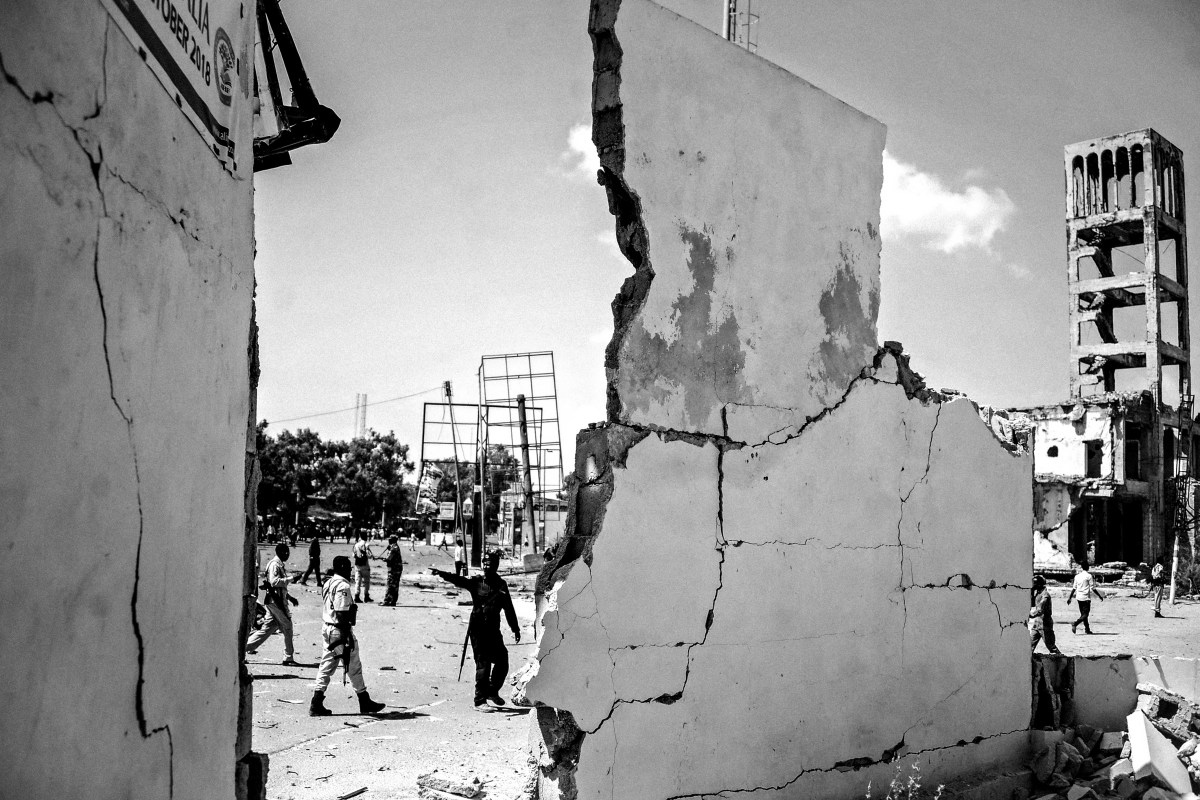
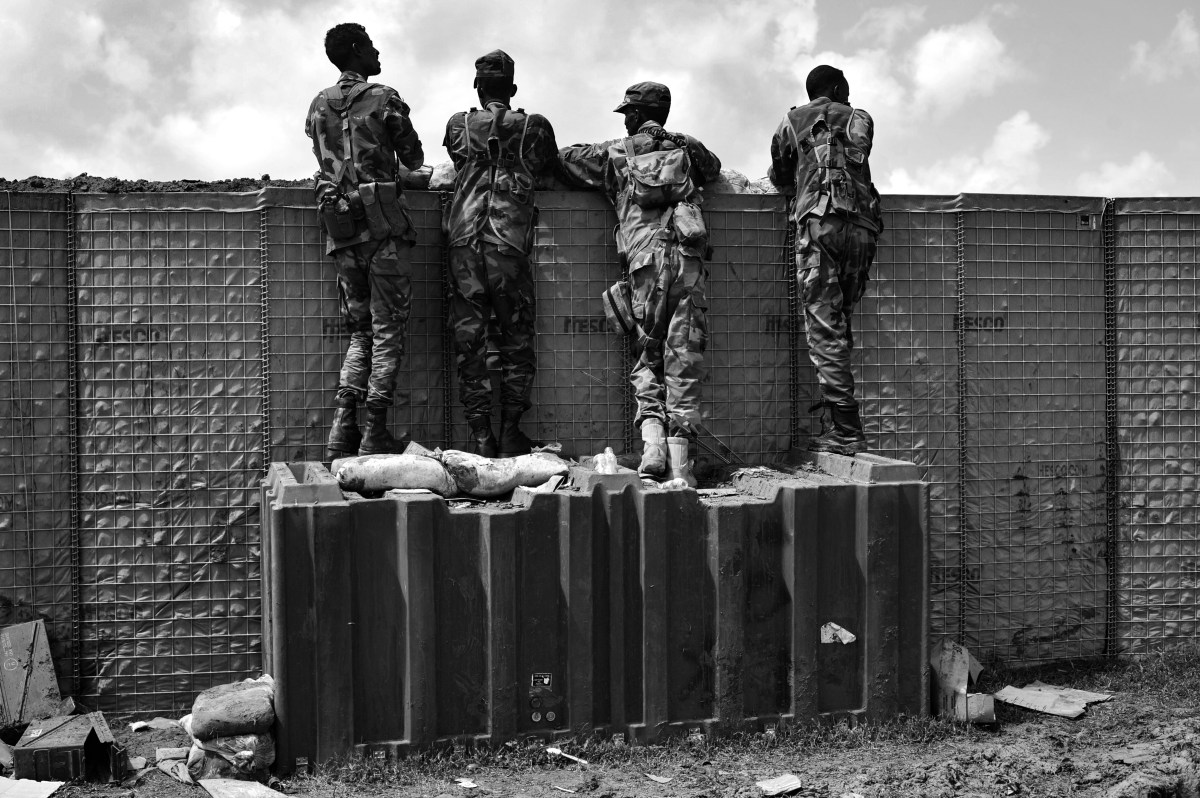
Left/Top: People stand next to destroyed walls at the scene of an al-Shabab car bombing attack in Mogadishu, Somalia, on Dec. 22, 2018. Right/Bottom: Somali soldiers at Sanguuni military base, where an American special operations soldier was killed by a mortar attack on June 13, 2018. Photos: AFP via Getty Images
“The United States Failed Us”
Less than a month before Luul and Mariam were killed, Waldhauser praised AFRICOM’s efforts to avoid civilian casualties before the House Armed Services Committee. He specifically referenced procedures meant to ensure “levels of certainty” to prevent harm to noncombatants. Days later, he emphasized that it was “very important … that we know exactly who we are attacking on the ground.”
Yet the Pentagon investigation found that the Americans had no idea who they were targeting. “During the post-strike review,” according to the investigator, “it was assessed that one of the ADM that loaded into the vehicle … was an Adult Female and child.”
Three Somali government sources — including Nur Gutale, a Somali official on the front lines of the conflict against al-Shabab in El Buur, where the drone strike took place — said there were seven people in the pickup truck that day, not the four or five the Americans argued about before the strike or the six their most seasoned analyst counted after numerous post-strike reviews of drone footage.
The men in the truck included members of al-Shabab: Alas Jango’an, the driver and the local head of Jaysh Al-Hisbah, al-Shabab’s police force; a tax collector with the militant group; and a poet associated with the group, who was identified in local press reports as Yusuf Dhegay. Others said a community elder in the car, identified as Ali Hared, also had relations with the militants, but they were unsure if he and the poet were “real” members or simply — like most civilians living in Shabab-controlled areas — compelled to deal with an armed group that functioned as the local government.
But the young man whose body Qasim found sprawled beside the pickup after the strike, 20-year-old Yusuf Dahir Ali, was a civilian, Gutale and others said. “He was a student in Mogadishu. It was school break, and he was just traveling home,” Gutale told The Intercept. “He was innocent.”
The Pentagon redacted all images of Luul and Mariam in the documents they released. The former U.S. strike cell analyst said those still frames from the drone footage — known as “snaps” — “would seal the deal on how blatantly obvious it was. If you got a snap of the woman and child running from the vehicle, you would be able to go: ‘How don’t you see that as a female and child?’” the analyst told The Intercept. “Typically, males in Somalia wear a dress-type thing. But women still look very different. If it’s during the day, you can tell.”
Nur Gutale agreed, insisting that even if the Americans confused a woman for a man when she entered the vehicle, there was no way to mistake her as she ran down the road with her child. Qasim noted that Luul was wearing a flowing green jilbab: a garment more voluminous than a hijab, covering the entire body and leaving only the face, hands, and feet exposed. “Because al-Shabab is there in the area, she had to wear it,” Luul’s brother Mohamed Dahir Mohamed explained of the terror group’s strict dress code. He likened Luul’s garb to a huge umbrella.
“Her death isn’t only what makes me angry. It’s that they say that they mistakenly killed her. That hurts me deeply. It was no mistake,” said Qasim, a formidable man with a hard stare, close-cropped hair, and a bright orange, henna-dyed goatee. “She wasn’t killed in the car where they couldn’t see her. She was hit out in the open. There is no way they could mistake her for a man. It’s a lie and it makes me sick.”
“This wasn’t top leadership. These were low-ranking guys. I don’t understand their priorities.”
Gutale said he “had a good relationship with AFRICOM” and provided intelligence on high-ranking Shabab officials, but he found American targeting choices puzzling — especially the strike that killed Luul and Mariam.
“This wasn’t top leadership. These were low-ranking guys. I don’t understand their priorities,” he told The Intercept. “There was no reason to kill a woman and child in a big strike. They know that they did this. The U.S. is at fault.”
“It’s heartbreaking,” he added in exasperation. “The United States failed us.”
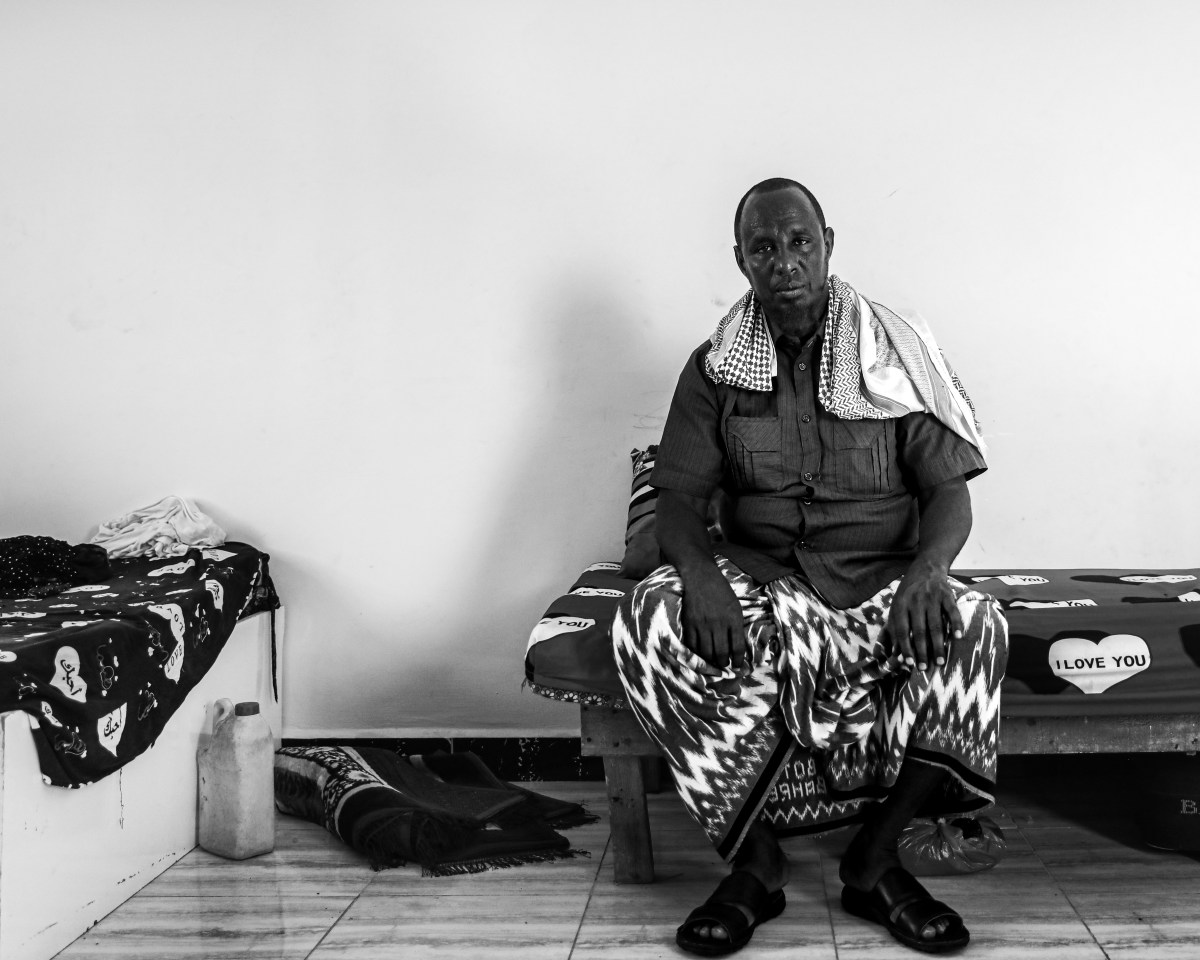
Even under the Trump administration’s loosened rules of engagement, Sarah Harrison, who worked as a lawyer in the Pentagon’s Office of General Counsel at the time of the attack, questioned the follow-up strike that killed Luul and Mariam. “U.S. forces were required by policy to take ‘extraordinary measures to ensure with near certainty’ that there would be no civilians injured or killed,” Harrison told The Intercept. She wondered why the U.S. hadn’t made another “near certainty assessment” before the second strike was carried out.
The investigator found that “some members did not have any FMV experience.”
The Pentagon investigator concluded that “time was the biggest factor” in misidentifying Luul. For reasons that are explained nowhere in the unredacted portion of the documents, the strike cell found itself “under perceived pressure” to launch the attack “as quickly as possible.” Experience levels also loom large in the investigation file. The most senior team member on duty had eight years of experience analyzing full motion video, or FMV, as live feeds from drones are known — a significant track record, according to experts. But the youngest member had spent just six months with the task force and the same amount of time analyzing such feeds. Elsewhere, the investigator asserts that “some members did not have any FMV experience.” One team member noted that “due to a contracting issue, they have lost a lot of experienced personnel.”
“For those without much experience as well as contractors working with a task force, the pressure to say ‘yes’ to get to the commander’s perceived desired outcome is pretty great,” said Todd Huntley, a former Staff Judge Advocate who served as a legal adviser on Joint Special Operations task forces conducting drone strikes in Afghanistan and elsewhere and now directs the national security law program at Georgetown University Law Center. “The combination of confirmation bias and the pressure to move quickly and achieve results is already tough to overcome. When you have less experienced people, that pressure is even greater.”
The investigator determined that no one tracked how much time strike cell members spent in a particular geographic area of responsibility, known in military jargon as an AOR. “This could lead to a very inexperienced crew working in an AOR due to a lack of a Checks and Balance system,” he wrote.
Another of Luul’s brothers, 38-year-old Abubakar Dahir Mohamed, had a succinct response: “If you admit that you assign someone with no experience then you have to take responsibility for what they do.”
The Pentagon investigator urged procedural changes that would affect every subsequent mission: “I recommend that each senior analyst has a brief with their team prior to going on shift to ensure the entire team has the correct mindset and highlights that accuracy is more important than speed.” There is no indication that that recommendation or any others were implemented.
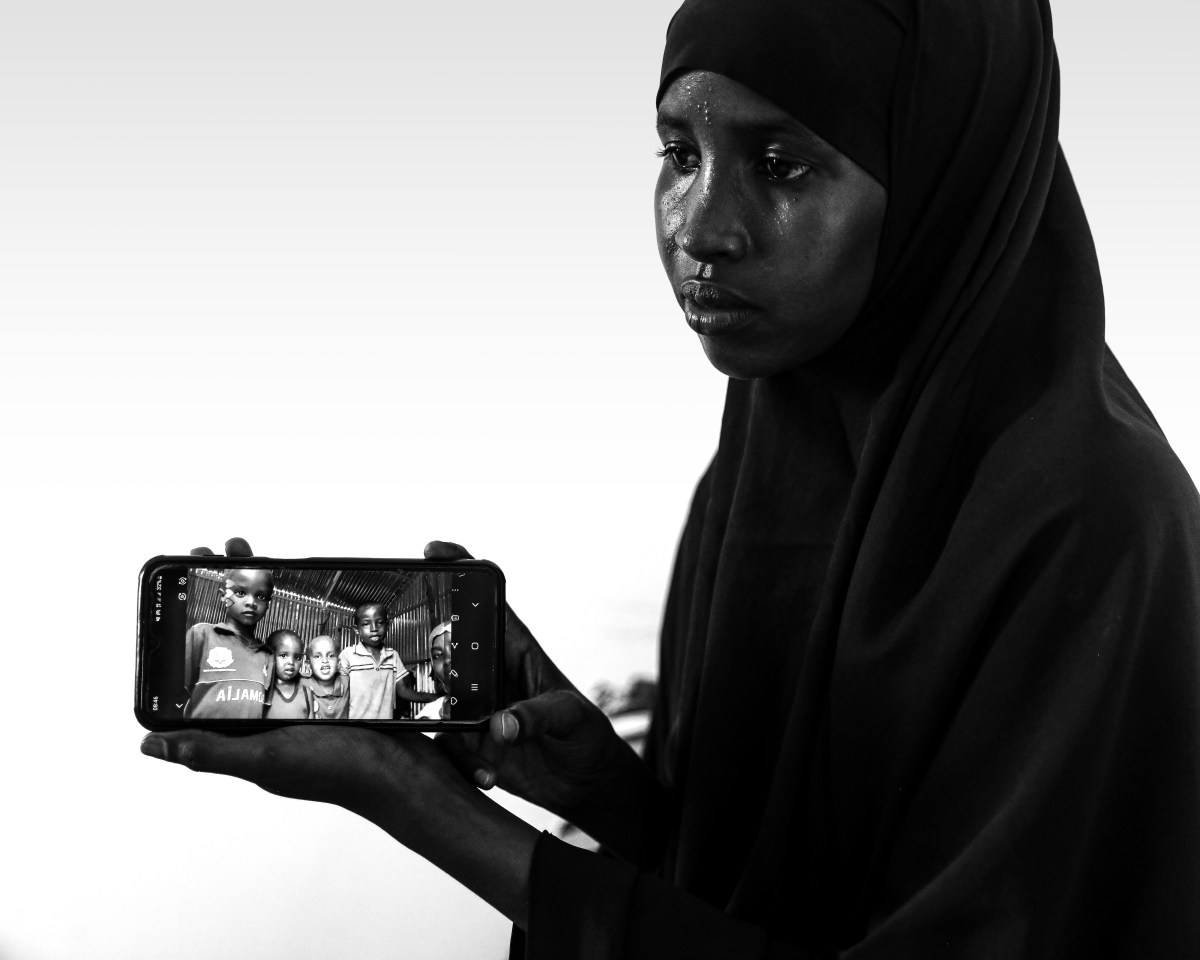
Erased From Existence
Living in al-Shabab territory in the 2010s, Luul inhabited a world almost devoid of smartphones and social media. Her family has no photographs to remember her by.
The U.S. government, meanwhile, has countless images of Luul. Its cameras captured video of her and Mariam entering the pickup truck, and analysts had eyes on her through her last moments. Luul’s visage now exists only in classified files and in the memories of those who knew her — and in the face of her younger sister, to whom she bore an uncanny, almost identical, resemblance.
“If you want to see Luul, it’s me,” Qaali Dahir Mohamed, Luul’s sad-eyed, soft-spoken, 18-year-old sister, told me when we spoke in a deserted rooftop lounge in Mogadishu. As the only two girls in their household, they shared a tight bond that extended past childhood when, in keeping with local custom, Qaali moved into Luul and Shilow’s home after they married. “When I was young, she used to carry me, protect me, tell me traditional stories to prepare me for life,” said Qaali, who hunched her tall, lithe form as she talked about her sister. “After she had her children, she had me look after them and continued to teach me about how to be responsible, how to be a good mother.” Qaali spoke with her hands, her fingers slowly twisting in the air as she talked about Luul. “She loved her children so much. She couldn’t bear to see them cry,” Qaali said before she sank down in her chair and started wiping away tears.
The entire family has been traumatized by the airstrike. Luul’s brothers say their elderly father never recovered from his daughter’s traumatic death and has been in failing health ever since. When Qasim’s son saw a “normal airplane” flying over their farm, he began running around, trying to hide, convinced it might kill him. The family told Luul’s son, Mohamed Shilow Muse, the truth about his mother’s death: “The Americans killed her with their airplane.” When he sees or hears a drone, they said, “he rushes under a tree to hide.”
A 2012 study of civilians in Pakistan found that the constant presence of drones, the fear that a strike might occur at any time, and people’s inability to protect themselves “terrorize[d] men, women, and children, giving rise to anxiety and psychological trauma among civilian communities.”
Mohamed, now 6 years old and living with his grandmother, constantly asks why Luul left him. He’s terrified of being alone. “If I or my mother leave him,” said Qaali, “he cries all day. He won’t stop. He feels abandoned.” Unable to continue, Qaali grasped her blue-veiled head with both hands, laid it on the glass table, and sobbed.

“The Height of Disrespect”
On April 5, 2019, Qasim was listening to the radio at a tea shop when he heard a BBC news report about the U.S. military acknowledging that it had killed a woman and child in a drone strike the previous April, the first admission of a civilian casualty by AFRICOM.
The announcement came more than a year after the attack, a delay AFRICOM blamed on a “reporting error,” claiming that its headquarters was only notified of the investigation months after it concluded. Four days later, in response to questions about compensating the family, then-spokesperson John Manley told The Intercept that AFRICOM was “working with our embassy in Somalia on a way forward.”
On April 12, 2019, Luul’s brother Abubakar wrote a letter to the Somali Ministry of Justice asking for help in obtaining compensation from the United States. Four days later, he wrote to AFRICOM via the “Contact Us” function on the command’s website, noting the family’s appreciation for acknowledging the deaths and asking the military to “take appropriate action toward the case as restitution for the lost lives.” After AFRICOM added a new online portal to file civilian casualty claims, Abubakar did so using this method as well. Abubakar, who lives part-time in Mogadishu and speaks and writes English, shared copies of his letters and screenshots of his submissions with The Intercept. Five years after the strike, the family has yet to be contacted, much less compensated, by AFRICOM.
“It is unacceptable that AFRICOM would resign itself to such total ignorance,” Amnesty’s Eviatar told The Intercept, noting the Pentagon’s repeated failures to contact survivors or offer condolence payments. “It is the height of disrespect for the local populations where the U.S. operates for the military to completely ignore the direct victims of lethal strikes, even when the U.S. knows they were civilians and the strikes were in error.”
After almost 17 years of drone strikes and commando raids in Somalia, the U.S. has carried out 282 declared attacks as well as an undisclosed number of CIA strikes. AFRICOM claims to have killed just five civilians in that period, including Luul and Mariam — although the command has never referred to them by name. But since nothing about the April 2018 attack was out of the ordinary, according to members of the task force, there is good reason to believe that the real number is far higher. Airwars, the U.K.-based airstrike monitoring organization, says the actual count of civilians killed by U.S. strikes in Somalia may be more than 3,000 percent higher than the official tally.
Over the last two decades, investigative reporters and human rights groups have increasingly documented America’s killing of civilians, underreporting of noncombatant casualties, failures of accountability, and outright impunity in Afghanistan, Libya, Somalia, Syria, Yemen and elsewhere. A 2021 investigation by New York Times reporter Azmat Khan revealed that the U.S. air war in Iraq and Syria was marked by flawed intelligence and inaccurate targeting, resulting in the deaths of thousands of innocent people. Out of 1,311 military reports analyzed by Khan, only one cited a “possible violation” of the rules of engagement; none included a finding of wrongdoing or disciplinary action; and fewer than a dozen condolence payments were made.
Last year, in the wake of these damning findings, the Pentagon pledged reforms. The 36-page Civilian Harm Mitigation and Response Action Plan provides a blueprint for improving how the Pentagon addresses noncombatant deaths but lacks mechanisms for addressing past civilian harm.
The Defense Department has publicly confirmed five civilian harm incidents in Somalia and maintains a $3 million annual budget to compensate survivors, but there is no evidence that any Somali victims or their families have ever received amends. The Pentagon has also been clear that it isn’t interested in looking back. “At this point we don’t have an intent to re-litigate cases,” Defense Secretary Lloyd Austin told Rep. Sara Jacobs, D-Calif., when she asked last year whether the Pentagon was planning to revisit past civilian harm allegations.
There’s no re-litigation necessary, however, in the case of Luul Dahir Mohamed and Mariam Shilow Muse. More than four years ago, AFRICOM admitted killing them. “Credibility, transparency, and accountability are fundamental to military operations,” Waldhauser said in a press release taking responsibility for the strike. To date, however, AFRICOM won’t even discuss reparations with a journalist, much less provide compensation to relatives of the dead.
Experts say that the deaths of Luul and Mariam offer AFRICOM the chance to finally live up to Waldhauser’s rhetoric. “This case is a real opportunity for AFRICOM, since they’ve acknowledged that this is a credible report of civilian harm,” said Joanna Naples-Mitchell, a human rights attorney and director of the nonprofit Zomia Center’s Redress Program, which helps survivors of U.S. airstrikes submit requests for compensation. “Given that there’s an English-speaking member of the family in Mogadishu, it would not be hard for the Pentagon to offer amends.”
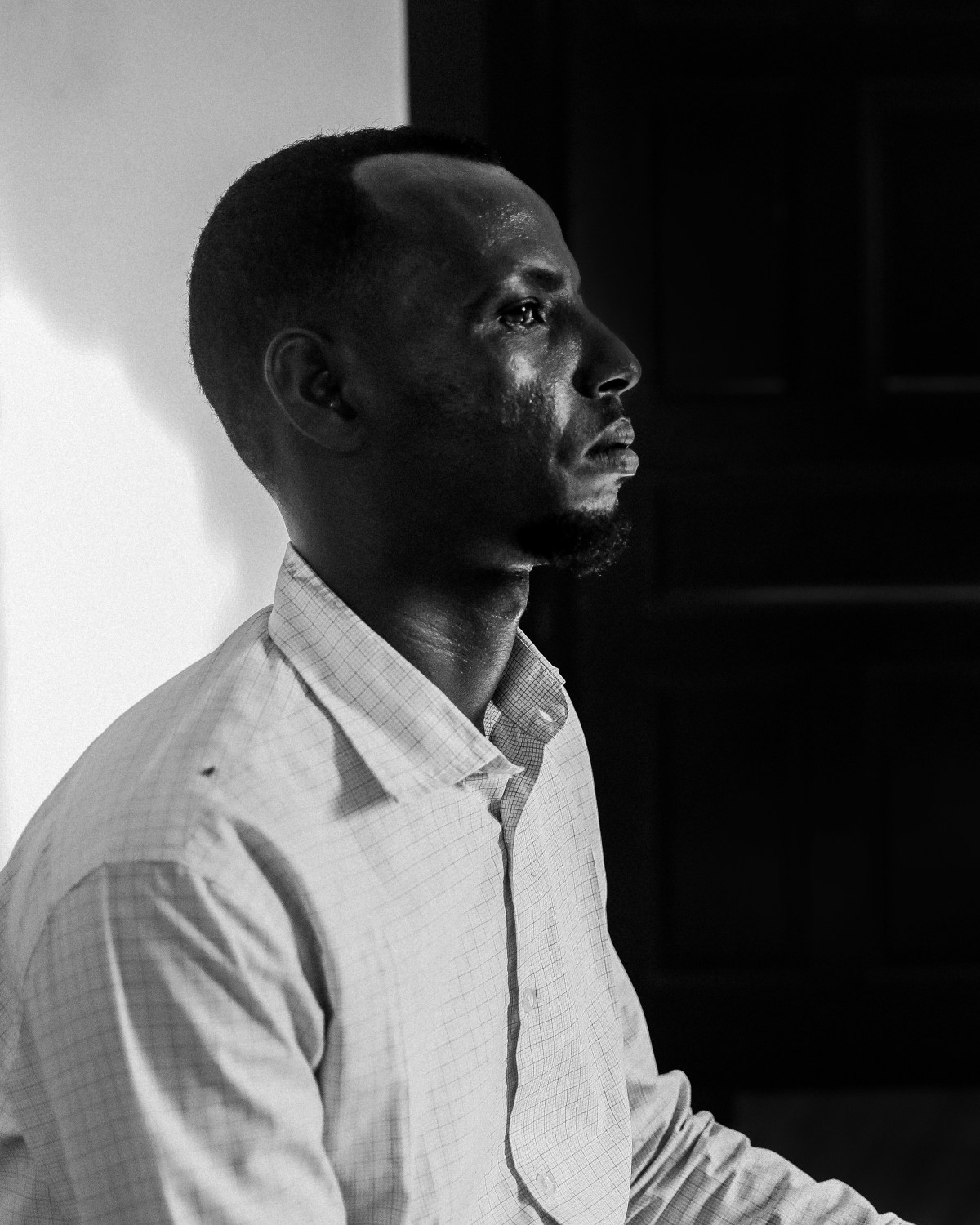
“They Don’t Know Who They Killed”
For most of the day I spent with Shilow Muse Ali in an outdoor restaurant in Mogadishu, he sat slack-jawed and blank-eyed, with a dazed look on his face. Sometimes he seemed confused, sometimes confounded. He answered my questions, but it was difficult to elicit much detail about the wife and child he’d lost. When I decided to end the interview and asked if there was anything else he wanted to say, his eyes narrowed and his demeanor changed.
“I was bewildered at the beginning when my daughter and wife were killed. I expected an apology and compensation considering the Americans’ mistake. But we received nothing,” he said in a voice with an increasingly hard edge. “They admitted there were civilian casualties, but this investigation shows that they don’t even know who they killed.”
For the first time all afternoon, Shilow looked me square in the eye and fury seemed to surge through him. “We aren’t the people they are targeting. We are not supposed to be treated like we’re enemies. Does the U.S. military even see a difference between enemies and civilians?” he asked, his voice rising and his hands slicing through the air. “They said they were following the car from the beginning. How could someone following the car, watching everything, not see a woman with a child?”
I had no answer.
“We want the truth from the American government. But we already know it,” he told me. “This attack shows that there’s no distinction, none at all. The Americans see enemies and civilians as the same.”



